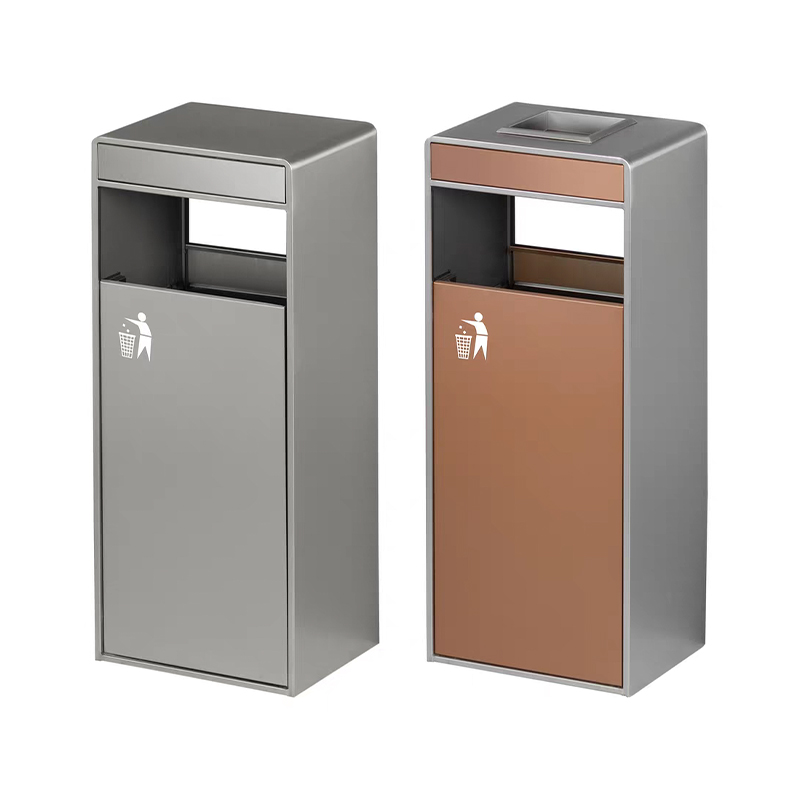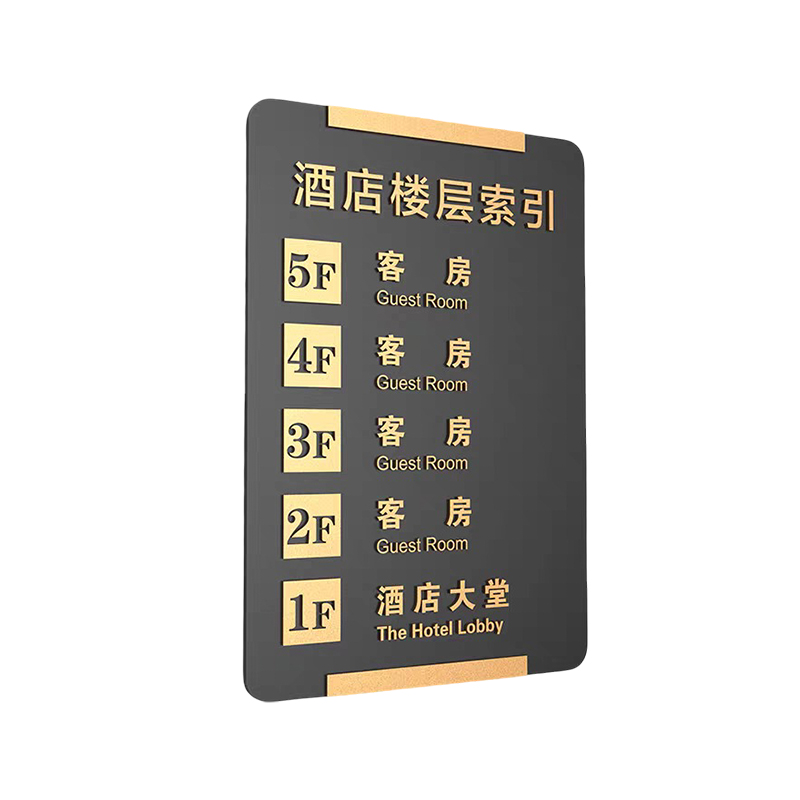How do index cards provide quick wayfinding in crowded places like airports?
Release Time : 2025-09-25
As modern transportation hubs, airports, as public spaces with high passenger density, complex traffic patterns, and urgent information needs, place extremely high demands on the clarity, accuracy, and efficiency of their wayfinding systems. Passengers come from diverse countries and regions, speak different languages, often carry luggage, and face tight time constraints. Guiding them through check-in, security screening, boarding, transfers, and baggage claim in the shortest possible time is a key challenge for airport operations. Index cards, as flexible, modular, and customizable information carriers, are becoming an increasingly integral component of airport wayfinding systems, playing an irreplaceable role in providing quick wayfinding.
1. Layered Information Design for Efficient Information Filtering
Airports are vast spaces with numerous functional areas. If all information were piled onto a single sign, it would easily create visual clutter and reduce identification efficiency. Index cards effectively address this problem through a layered design: a "main sign + information modules." The main sign is typically fixed to a wall or column for stability, while the index cards serve as replaceable information panels embedded within it. Through zoning, categorization, and a hierarchical approach, index cards clearly display key information such as "floor function layout," "area guidance," and "service facilities." For example, at the second-floor terminal entrance, the index card lists key information such as "Domestic Departures," "International Departures," "Security Checkpoint Location," and "Check-in Counter Location." This allows passengers to quickly identify their destination, avoid blindly wandering, and significantly improve transit efficiency.
2. Modularity and Interchangeability Ensure Real-Time and Accurate Information
Dynamic airport operations, such as flight adjustments, temporary lane closures, and the addition of new commercial services, require highly flexible and up-to-date information. Traditional fixed signage is difficult to modify once created, while index cards utilize plug-in or magnetic mounting mechanisms, enabling quick content changes. Operators can update index card information within minutes based on flight dynamics or temporary adjustments, ensuring passengers always receive accurate information. Furthermore, to meet the needs of passengers speaking different languages, index cards can be pre-produced in multiple languages and switched on demand, meeting the service standards of international airports and enabling rapid cross-language navigation.
3. Standardized Visual System Improves Recognition
Efficient wayfinding relies on a unified visual language. Airport index cards typically adhere to internationally accepted wayfinding design standards, employing high-contrast color schemes, clear, easy-to-read sans-serif fonts, standardized icon symbols, and a top-to-bottom, left-to-right reading pattern. This standardized design reduces cognitive overhead, enabling passengers to quickly comprehend information without having to think. Furthermore, index cards are often integrated with the airport's overall wayfinding system, using a unified numbering system to achieve seamless cross-area connectivity, helping passengers build spatial memory and improving navigation efficiency.
4. Multi-point Deployment and Key Node Guidance to Form a Wayfinding Network
Index cards are not isolated; rather, they are widely distributed, serving as key nodes in the airport's wayfinding network. From entrances, transfer corridors, elevator halls, corridor intersections, and terminal areas, index cards are strategically placed at key locations where traffic flows converge and direction is determined. Each index card provides detailed directions to a specific area and also identifies connections to adjacent areas, forming a "point-line-surface" wayfinding network. As passengers travel, index cards guide them step by step toward their destination, creating a seamless, step-by-step, interconnected experience. Especially in transit areas at large airports, index cards clearly mark dedicated routes, such as "International to Domestic" and "Fast Transfer Lanes," significantly reducing transit time.
5. Materials and Craftsmanship Ensure Durability and Visibility
Airports are a high-traffic environment, and index cards must withstand constant touch, friction, and even accidental scratches. Therefore, they are typically made of high-strength acrylic, PC, or metal panels with scratch-resistant and UV-resistant coatings to ensure long-term legibility. Some index cards in strategic locations feature backlighting or edge-lit designs, ensuring high visibility even in dimly lit areas, further enhancing their effectiveness.
In high-traffic areas like airports, index card signage, with its advantages of information layering, modular flexibility, visual consistency, strategic layout, and durability and reliability, creates an efficient, precise, and user-friendly wayfinding system. They serve not only as a transmitter of information but also as a source of psychological security for passengers. Through scientific design and intelligent management, Index Card continues to optimize the spatial experience at airports, helping passengers achieve rapid passage in complex environments with ease and ease, providing solid support for the efficient operation of modern transportation hubs.
1. Layered Information Design for Efficient Information Filtering
Airports are vast spaces with numerous functional areas. If all information were piled onto a single sign, it would easily create visual clutter and reduce identification efficiency. Index cards effectively address this problem through a layered design: a "main sign + information modules." The main sign is typically fixed to a wall or column for stability, while the index cards serve as replaceable information panels embedded within it. Through zoning, categorization, and a hierarchical approach, index cards clearly display key information such as "floor function layout," "area guidance," and "service facilities." For example, at the second-floor terminal entrance, the index card lists key information such as "Domestic Departures," "International Departures," "Security Checkpoint Location," and "Check-in Counter Location." This allows passengers to quickly identify their destination, avoid blindly wandering, and significantly improve transit efficiency.
2. Modularity and Interchangeability Ensure Real-Time and Accurate Information
Dynamic airport operations, such as flight adjustments, temporary lane closures, and the addition of new commercial services, require highly flexible and up-to-date information. Traditional fixed signage is difficult to modify once created, while index cards utilize plug-in or magnetic mounting mechanisms, enabling quick content changes. Operators can update index card information within minutes based on flight dynamics or temporary adjustments, ensuring passengers always receive accurate information. Furthermore, to meet the needs of passengers speaking different languages, index cards can be pre-produced in multiple languages and switched on demand, meeting the service standards of international airports and enabling rapid cross-language navigation.
3. Standardized Visual System Improves Recognition
Efficient wayfinding relies on a unified visual language. Airport index cards typically adhere to internationally accepted wayfinding design standards, employing high-contrast color schemes, clear, easy-to-read sans-serif fonts, standardized icon symbols, and a top-to-bottom, left-to-right reading pattern. This standardized design reduces cognitive overhead, enabling passengers to quickly comprehend information without having to think. Furthermore, index cards are often integrated with the airport's overall wayfinding system, using a unified numbering system to achieve seamless cross-area connectivity, helping passengers build spatial memory and improving navigation efficiency.
4. Multi-point Deployment and Key Node Guidance to Form a Wayfinding Network
Index cards are not isolated; rather, they are widely distributed, serving as key nodes in the airport's wayfinding network. From entrances, transfer corridors, elevator halls, corridor intersections, and terminal areas, index cards are strategically placed at key locations where traffic flows converge and direction is determined. Each index card provides detailed directions to a specific area and also identifies connections to adjacent areas, forming a "point-line-surface" wayfinding network. As passengers travel, index cards guide them step by step toward their destination, creating a seamless, step-by-step, interconnected experience. Especially in transit areas at large airports, index cards clearly mark dedicated routes, such as "International to Domestic" and "Fast Transfer Lanes," significantly reducing transit time.
5. Materials and Craftsmanship Ensure Durability and Visibility
Airports are a high-traffic environment, and index cards must withstand constant touch, friction, and even accidental scratches. Therefore, they are typically made of high-strength acrylic, PC, or metal panels with scratch-resistant and UV-resistant coatings to ensure long-term legibility. Some index cards in strategic locations feature backlighting or edge-lit designs, ensuring high visibility even in dimly lit areas, further enhancing their effectiveness.
In high-traffic areas like airports, index card signage, with its advantages of information layering, modular flexibility, visual consistency, strategic layout, and durability and reliability, creates an efficient, precise, and user-friendly wayfinding system. They serve not only as a transmitter of information but also as a source of psychological security for passengers. Through scientific design and intelligent management, Index Card continues to optimize the spatial experience at airports, helping passengers achieve rapid passage in complex environments with ease and ease, providing solid support for the efficient operation of modern transportation hubs.







